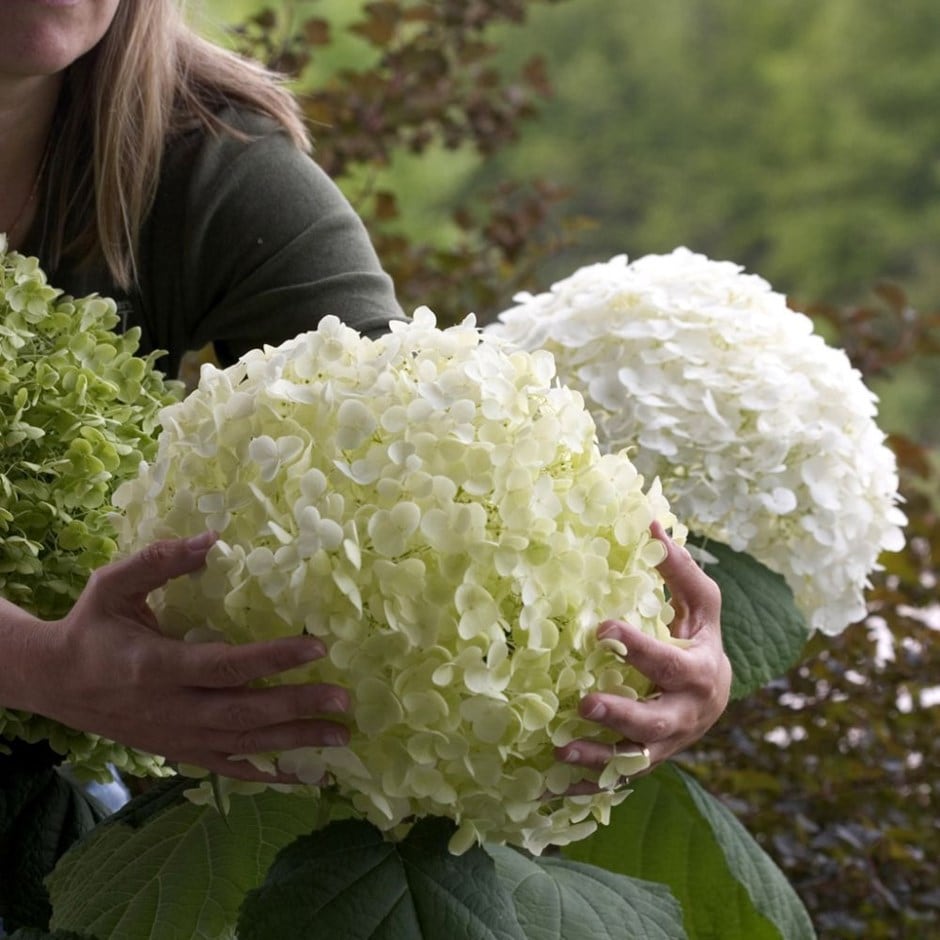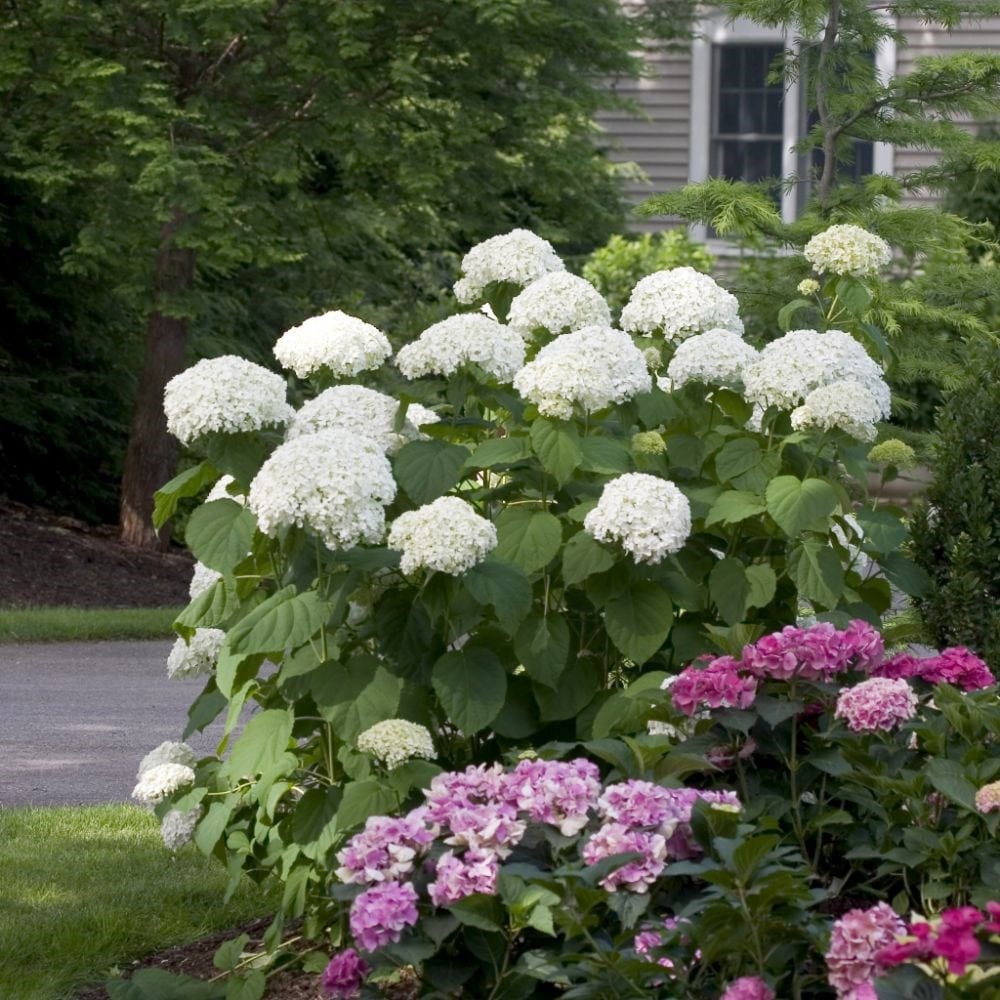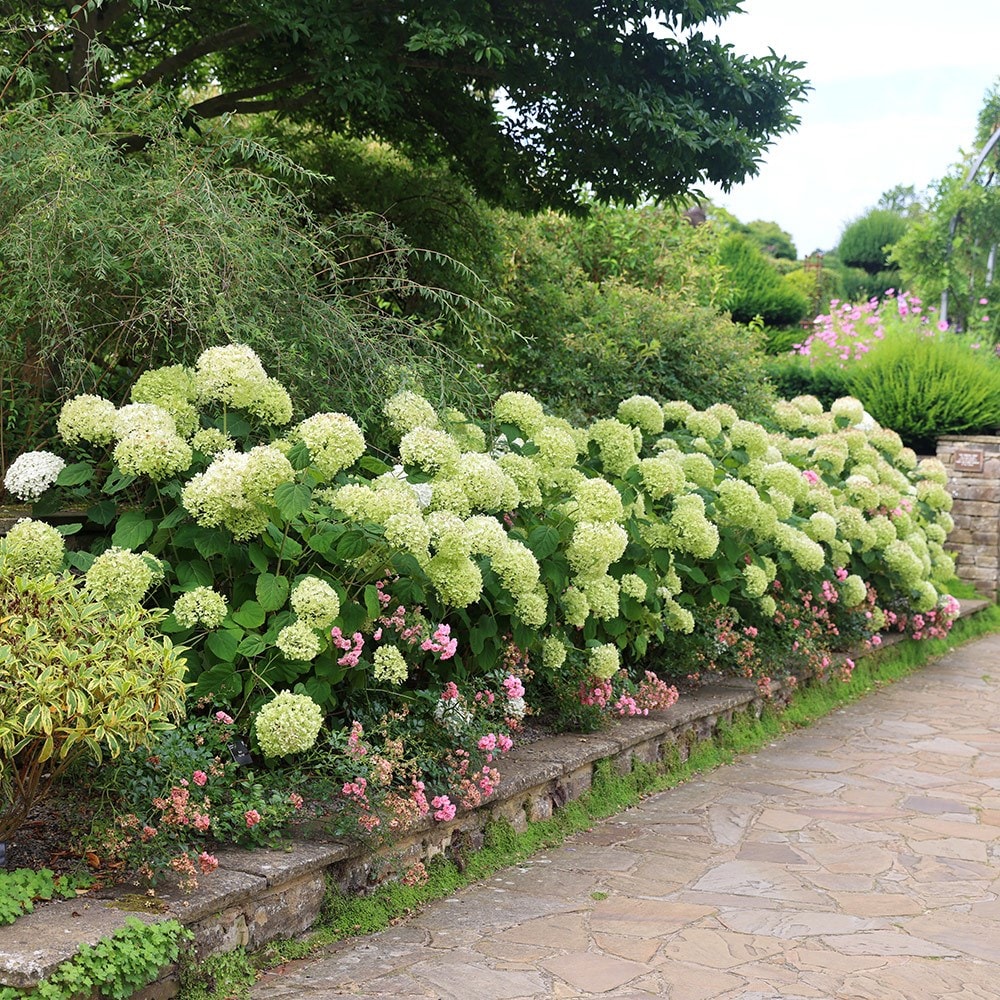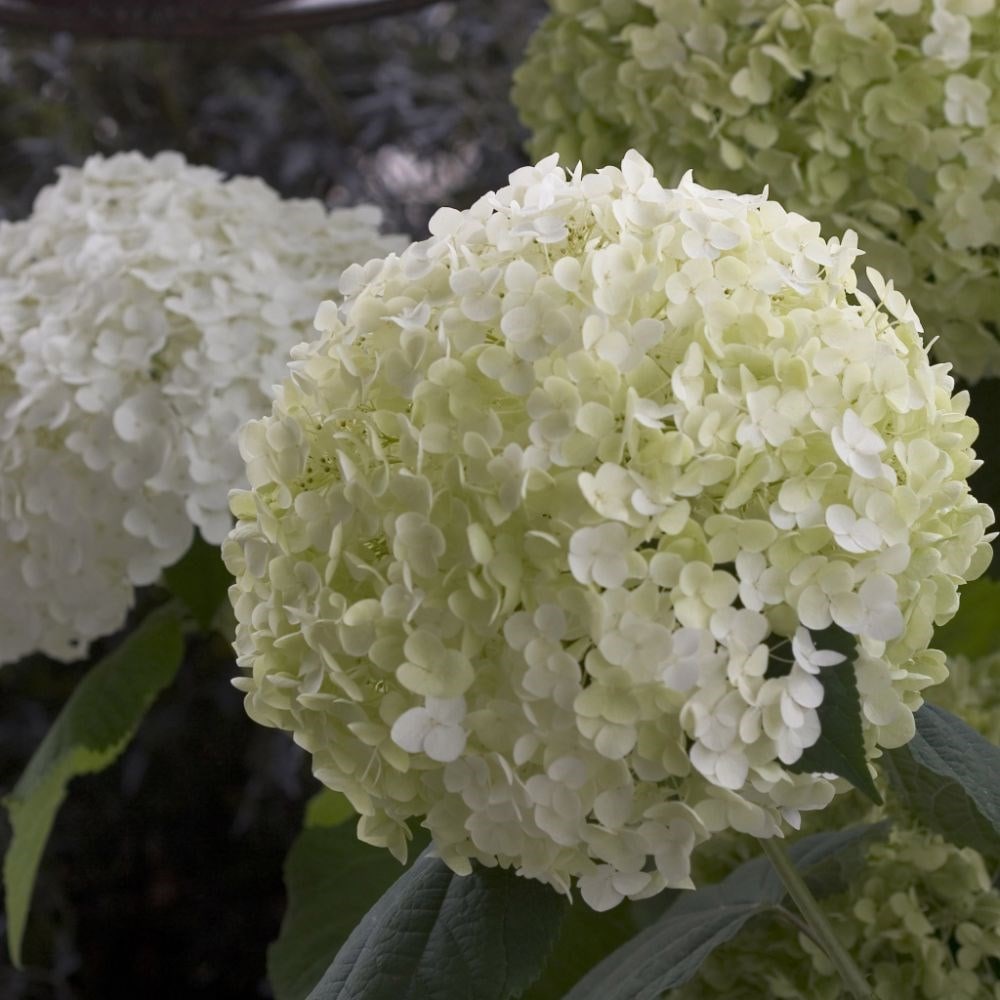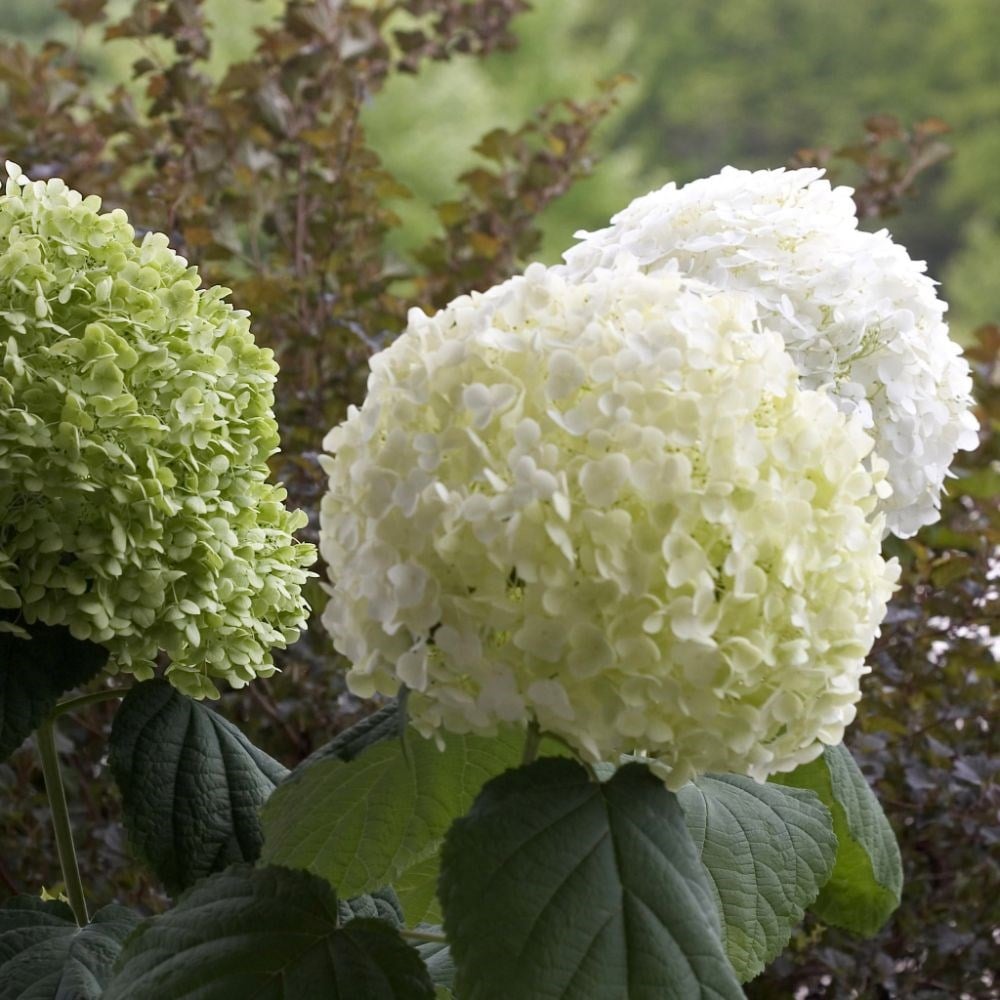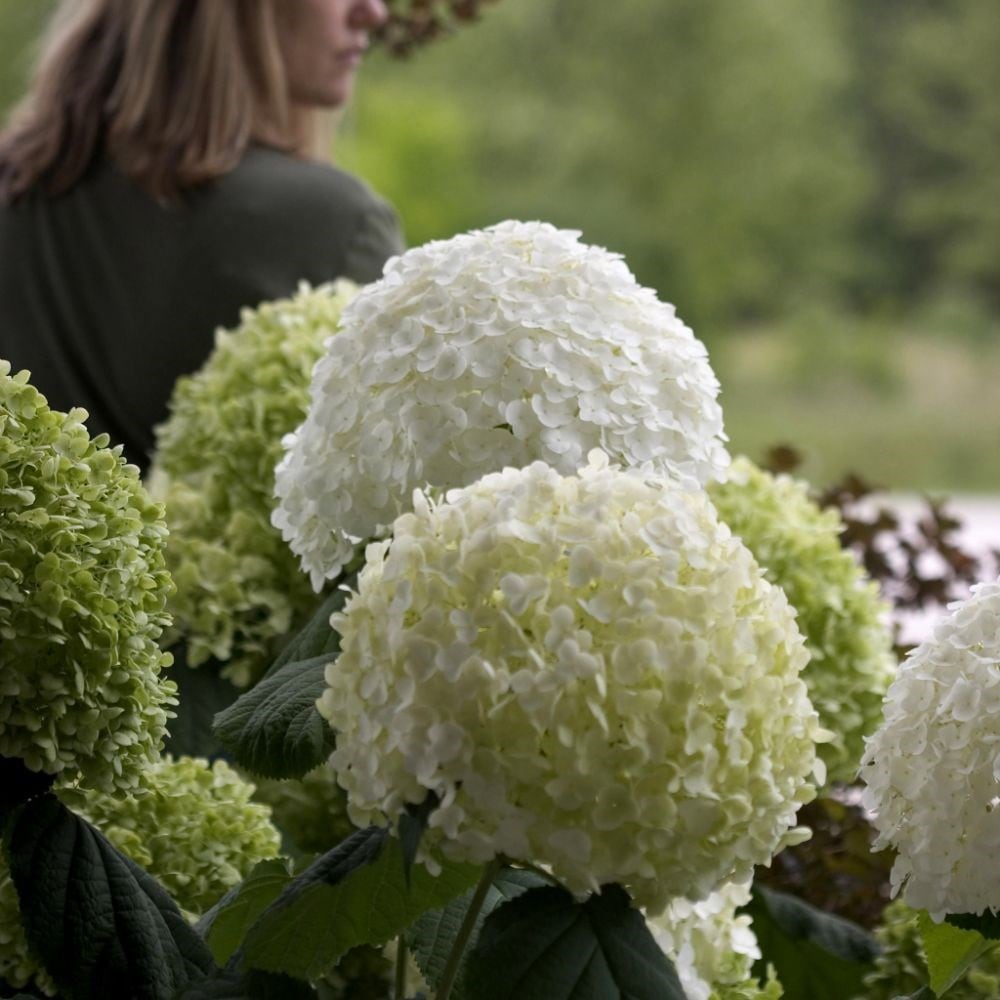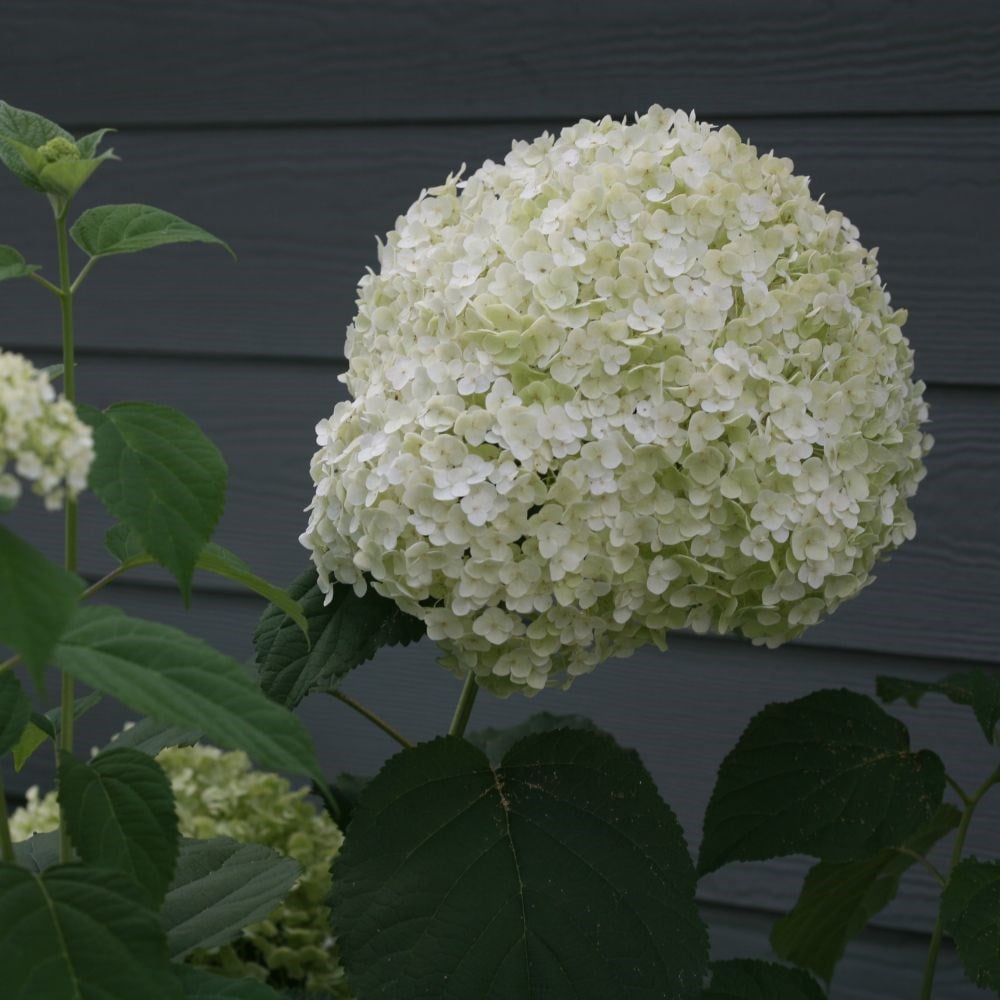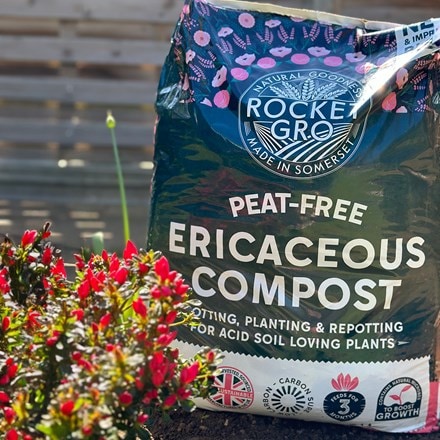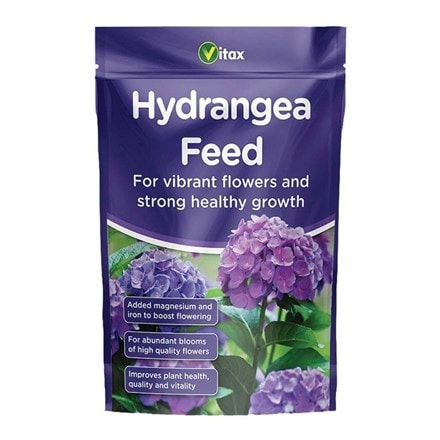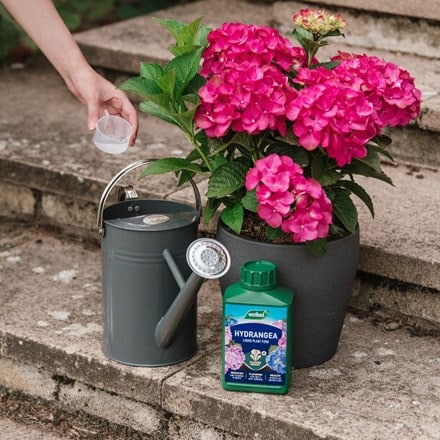Hydrangea arborescens Strong Annabelle ('Abetwo') (PBR)
sevenbark ( syn. Incrediball or Strong Annabelle )
Eventual height & spread
Hydrangea arborescens Strong Annabelle ('Abetwo') (PBR)
sevenbark ( syn. Incrediball or Strong Annabelle )
- 3 litre pot
- £35.75
- available to order from summer
- 12 litre pot | 80 - 100cm tall
- £109.99
- available to order from summer
Delivery options
- Standard £5.99
- Position: full sun or partial shade
- Soil: moderately fertile, moist but well-drained soil
- Rate of growth: average
- Flowering period: July to September
- Hardiness: fully hardy
Hydrangea arborescens 'Strong Annabelle' has tougher branches than many of the other arborescens types, which means that as they mature they will stand up better in more exposed positions and will rarely flop over when laden with flowers.
The glorious bundles of white flowers will also get larger as the plant grows older, but even when they are still quite young, they will put on a dazzling and long-lasting display from mid summer.
The glorious bundles of white flowers will also get larger as the plant grows older, but even when they are still quite young, they will put on a dazzling and long-lasting display from mid summer.
Choose a spot with partial shade to full sun, though at hotter, sunnier times of the year, partial shade is preferable to protect the blooms and avoid the plant wilting after planting. The soil should be well-drained, rich, and consistently moist, but not waterlogged.
Dig a hole twice the width of the root ball and just as deep, then mix in plenty of organic matter such as compost or well-rotted manure. Place the plant in the hole, backfill with the enriched soil, and water thoroughly. Mulch around the base to retain moisture and keep the roots cool, but keep the mulch away from the stem to prevent rot.
Regular watering is important, especially during dry spells, to ensure the plant establishes well and produces abundant blooms - hydrangeas do not like to dry out. Remove faded flowerheads in spring after the danger of frosts, cutting back the flowered stems to a strong pair of buds. Take out misplaced or diseased shoots.
Once established, remove a quarter to a third of the shoots to the base of the plant.
Dig a hole twice the width of the root ball and just as deep, then mix in plenty of organic matter such as compost or well-rotted manure. Place the plant in the hole, backfill with the enriched soil, and water thoroughly. Mulch around the base to retain moisture and keep the roots cool, but keep the mulch away from the stem to prevent rot.
Regular watering is important, especially during dry spells, to ensure the plant establishes well and produces abundant blooms - hydrangeas do not like to dry out. Remove faded flowerheads in spring after the danger of frosts, cutting back the flowered stems to a strong pair of buds. Take out misplaced or diseased shoots.
Once established, remove a quarter to a third of the shoots to the base of the plant.
- Humans: Skin allergen; Pets: Harmful if eaten
